Moonwalk One
The Apollo 11 mission, when Neil Armstrong and Edwin "Buzz" Aldrin landed and walked on the Moon on July 20th 1969, has become one of the most iconic events of the 20th Century. It was the culmination of a huge project by NASA which began with a mission statement by President Kennedy in 1961. The US and Soviet Union had been in the Space Race for a decade, sending up rocket after rocket and scanning the surface of Earth's satellite with the objective of putting a man on its surface.
The events coincided with the height of combat operations in Vietnam so a 'good news' story was perhaps needed to ensure the decade ended on a good note. To maximise publicity, NASA commissioned filmmaker Theo Kamecke to document the build up to the launch and events on Earth and space during the flight and brief moonwalk. The PR person recognised that, by the time Kamecke's documentary was finished that people would be sick of Apollo 11 so didn't want something to be released straight away, more a 'time capsule' that could be looked at in years to come and give the viewer an idea of what was happening in NASA, on the spacecraft and on Earth during the days leading up to the launch and after the mission was accomplished.
Kamecke goes for a poetic approach, beginning with shots of another incredible human feat, Stonehenge, before cutting to the immense caterpillar tracks moving equipment around the launch site in Florida. He then shows the many people camping out to get a first hand view of the launch from the beach across the bay and events carrying on as normal.
A simple documentary about the blast off, journey and first steps on the moon would have been interesting in itself but Kamecke and his crew use their unprecedented access to NASA's facilities to show the incredible preparation that went into the Apollo missions, from ensuring the Astronauts were physically and mentally ready for their trips into space to the meticulous design and construction of the suits so they wouldn't die up there!
For those interested in the space missions, and the Apollo 11 in particular, there is a wealth of fascinating footage in Moonwalk One as you are taken behind the scenes at NASA and given a tour of what went on prior to the launch. One of the most interesting things, and something I had never thought about, was what happens to the Saturn V rocket between the launch and the command module splashing down so the sequence demonstrating how the vast fuel tanks disappear, how the craft uses Earth's gravity as a slingshot and how it transforms itself prior to landing on the Moon. He even incorporates sci-fi TV shows such as Buck Rogers to show the ambition and wildly inaccurate guesses that writers had regarding space travel.
Kamecke wrote some narration with E.G. Valens which is beautifully delivered by Laurence Luckinbill and perfectly complements the story (written by Kamecke and producer Peretz W. Johnnes) and Charles Morrow's wonderfully evocative score.
Moonwalk One is a thoughtful and fascinating document of one of Man's most significant achievements of the 20th Century. Kamecke has truly succeeded in his brief and made a wonderful document of what happened in the week beginning July 15th 1969.
The Disc
Extra Features
The set contains both the restored widescreen and the original 4:3 Director's Cut, both with a commentary by Theo Kamecke and Christopher Riley. This is an interesting and well delivered track with Riley knowing what questions to ask Kamecke and when, acting as a brilliant moderator to allow the director to impart all the information that is relevant to events on screen.
Creating the Time Capsule - The Making of Moonwalk One is basically a brand new long interview with Kamecke (directed by Christopher Riley) and is a fine companion piece to the commentary. He does repeat a couple of things but does impart some interesting facts.
In Return to the Film, Kamecke sits and explains that he doesn't like to watch his own pictures but had to to make the Director's Cut, sitting in a booth in Molinare before three monitors, saying how he tries to avoid revisiting films as they just make him think what he would have done differently. Return to Stonehenge is a little different as it is shot on location and Kamecke describes how he first visited the extraordinary monument and why he decided to use it in the documentary.
You can read most, if not all, of the Original Treatment as the pages turn automatically so you get a good idea of the shooting script and the ideas that Kamecke and Valens had in mind, together with the changes that were made as they are written there on the paper. You can also browse through the Original Storyboards in the same way.
There are two galleries: Behind the Scenes Photos and NASA Apollo 11 Photos with the latter running much longer and with dialogue from the film playing behind the pictures.
There is also the Original Trailer.
The Picture
This uses the original 35mm print and some NASA material from the time which has spent years in liquid nitrogen so it wouldn't get damaged. It has undergone a significant restoration process which has massively improved the picture but it is far from flawless with high noise levels and some print damage. The footage is quite breathtaking and as Kamecke basically had carte blanche and went into many areas that are usually off limits, even being vacuumed down to avoid taking contaminants into the same room as the command module.
From the promotional material I have seen there is a marked difference between the original and restored versions of the film, though the original has the correct aspect ratio which appears to have been stretched slightly for the widescreen presentation. The newer version is much clearer and the colours are far more accurate and it certainly looked much better when viewing the different versions over two days. As it was shot in full frame, it feels more natural to watch it in that format though you possibly miss out on some detail that was recovered from the edges of the print and is evident in the widescreen version.
The Sound
You have the choice of Dolby Digital 5.1 or stereo sound on both widescreen and full frame versions of the film but you can't flick between them once the film has started which made it harder to compare the two. I just preferred the stereo, only because the dialogue seemed slightly sharper and the age and type of time suits a stereo track more than a surround remix.
As I said, the score is fantastic and does for this film what Brian Eno's did for the For All Mankind documentary, with each memorable in their own way.
Final Thoughts
As this is the 30th Anniversary of the Apollo 11 Moon landing, there have been some fantastic releases such as For All Mankind and this is as good a companion piece to that superb documentary as you will find. For me, Moonwalk One isn't as accomplished, nor is the picture quality as good, but it is an intelligent and involving film that deserves a wider audience and comes highly recommended.
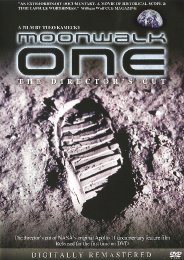
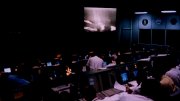

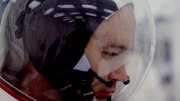



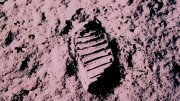
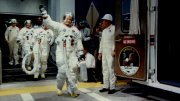

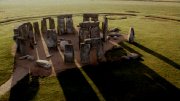
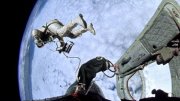
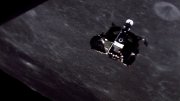
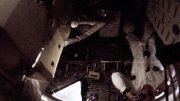
































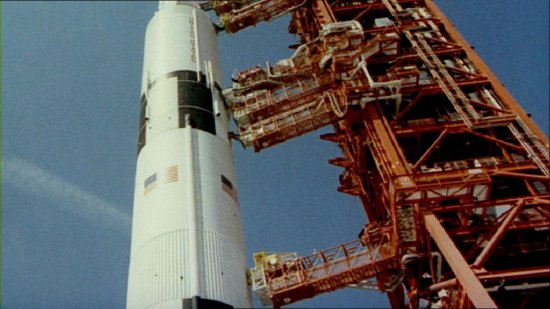




Your Opinions and Comments
Be the first to post a comment!